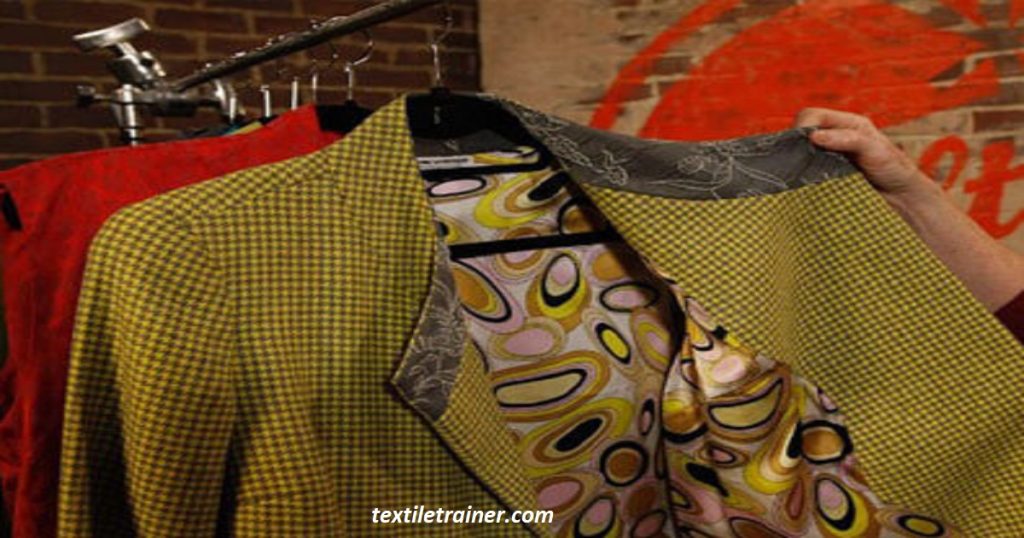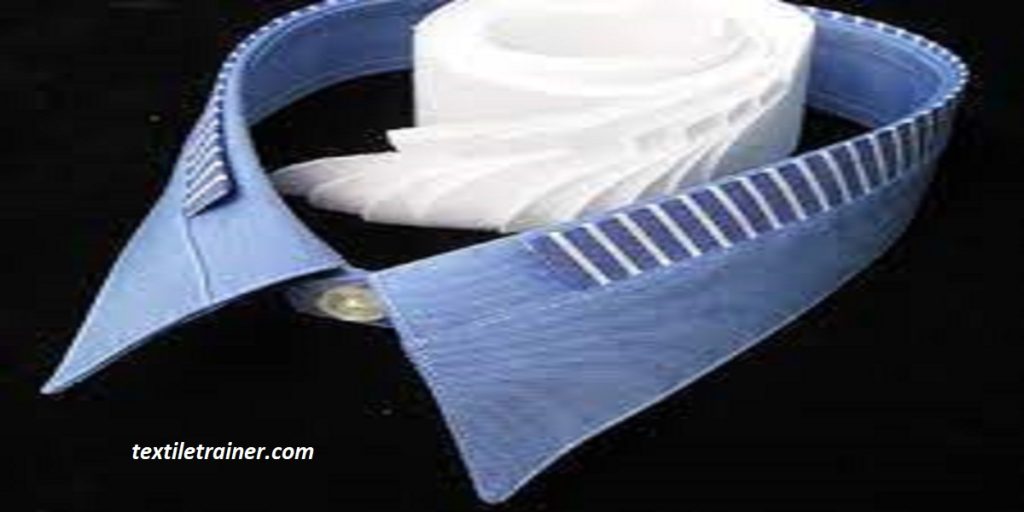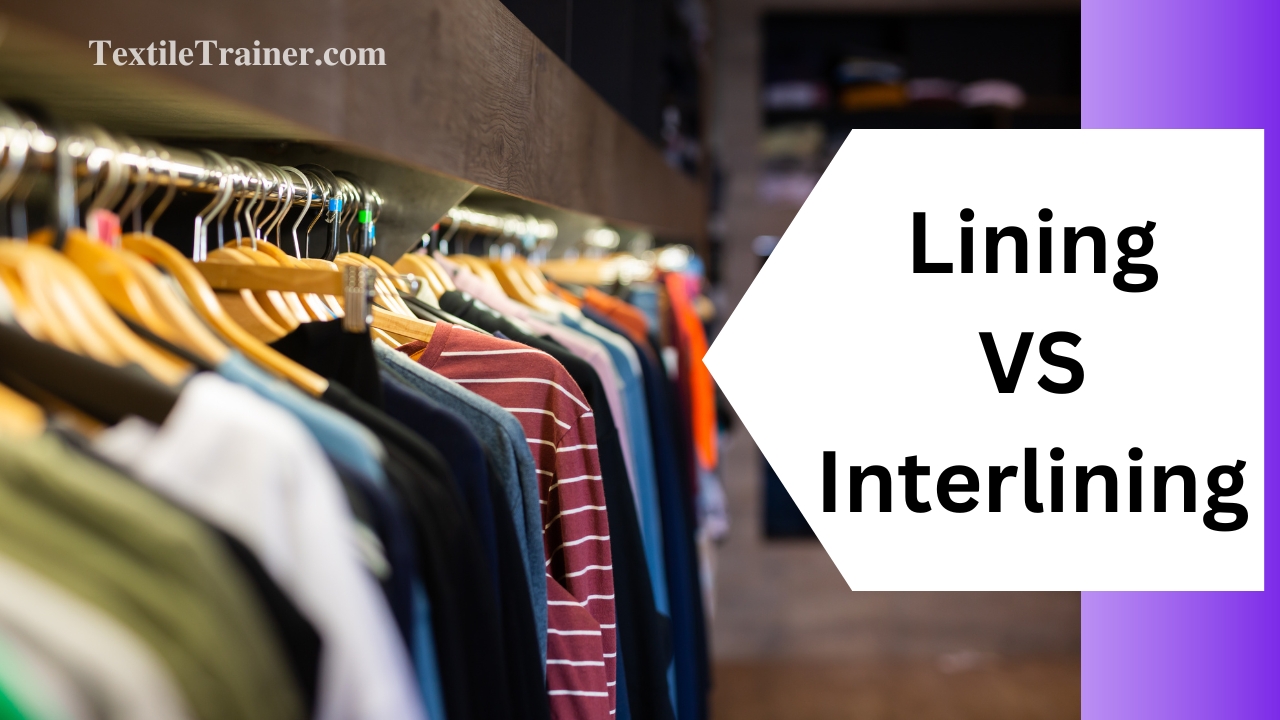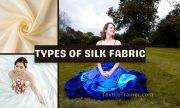What is Lining?
Lining: Linings are textiles used to cover the inner side of the garments. In apparel, lining refers to a layer of fabric that is sewn into a garment to provide a smoother, more comfortable feel against the skin and to improve the drape and overall appearance of the garment.
Lining can be made from a variety of materials, including silk, cotton, rayon, or synthetic fabrics, and is added to a variety of garments, such as dresses, jackets, coats, and trousers.
The main purpose of a lining in apparel is to prevent the outer fabric from clinging to the body and to improve the overall fit and comfort of the garment. Lining can also help to protect the outer fabric from sweat and other body oils, extend the life of the garment, and add extra warmth or insulation.
Lining can be sewn into the garment as a separate layer, or it can be attached at strategic points, such as the neckline, armholes, or waistline, to help the lining and outer fabric move together as one. Some garments, such as blazers and suit jackets, may require a full lining, while others may only require partial lining or no lining at all, depending on the style, fabric, and intended use of the garment.

What is Interlining?
Interlining: Interlinings, also called interfacing, are generally nonwoven fabrics that add more structure and body to garment components like collars, button plackets, waistbands, and cuffs. Interlinings may be fusible or sew-on. Interlining durability is essential for garment construction.
In addition to providing structure and support, interlining can also be used to alter the drape and hand of the fabric, or to add insulation and warmth to a garment. For example, a lightweight fusible interfacing can be used to add crispness to collars, cuffs, and waistbands, while a heavy quilted interlining can be used to add warmth to a winter coat.
Interlining can also be used to enhance the appearance of a garment. For example, a sheer outer fabric can be underlined with a solid color interlining to create a more opaque, colorful look. Similarly, a fabric with a loose or open weave can be interlined with a solid or smooth material to give the garment a more finished and polished appearance.
The choice of interlining material and type depends on the type of garment being made, the desired effect, and the fabric used. For example, a light, flowy dress may require a lightweight sew-in interlining to give it structure, while a heavy winter coat may require a thick, quilted interlining to add insulation and warmth. The interlining should be carefully selected and applied to ensure that it complements the outer fabric and lining, and helps to achieve the desired look and feel of the garment.

Differences between lining & Interlining:
| Lining | Interlining |
| 1. A layer of different material covering the inside surface of garments. | 1. An important accessory in garment, which is used between two layers of fabric. |
| 2. Generally smooth and lustrous fabrics made of silk or manufactured fiber or cotton is used as lining. | 2. Fabric made of cotton, nylon, polyester, viscose and wool are used in interlining. |
| 3. It is generally applied in jacket and coats. | 3. It is generally used in cuffs, collar and the front part of jacket and coats. |
| 4. It can be used in lustrous wool alpaca fabric or silk filling. | 4. It can be used canvas flannel and non-woven fabric. |
| 5. It is joined by sewing. | 5. It is joined by fusing and sewing. |
| 6. This is used to feel comfort as well as beauty and to prevent wear on a side. | 6. This is used to hold up, support and control the area of garments and to keep original shape. |
| 7. Finishing is not compulsory. | 7. Sometime it is compulsory like crease resistance finish. |
| 8. It has no classification. | 8. It is of three types. a) Sewn Interlining b) Fusible Interlining c) Quilted Interlining |







Im grateful for the article post. Want more.
ok. I will try.
Very informative article post. Keep writing.
keep visit our site…
I value the article.Really looking forward to read more. Want more.
ok, I will try.
Very neat blog post.Thanks Again. Will read on…
Keep visit our site…..
Thanks again for the blog post.Really looking forward to read more. Want more.
ok, I will try.
Thanks a lot for the blog post.Really looking forward to read more. Fantastic.
thanks…
Appreciate you sharing, great article post.Thanks Again. Much obliged.
thanks too. please support us.
Really enjoyed this article post.Thanks Again. Awesome.
thanks…
Thank you ever so for you article.Really thank you! Awesome.
please support us…
Thanks for the blog article.Really thank you! Really Great.
keep visit our site. thanks too.
I really enjoy the blog article.Really thank you! Really Cool.
Thanks
I appreciate you sharing this blog.Thanks Again. Really Great.
Enjoyed every bit of your blog.Much thanks again. Really Cool.
I truly appreciate this blog.Really thank you!
Major thankies for the blog.Really thank you! Great.
I appreciate you sharing this blog article.Much thanks again.
Very good post.Really looking forward to read more. Really Great.
Looking forward to reading more. Great blog post.Really looking forward to read more.
Enjoyed every bit of your article.Really thank you!
keep visit our site.
I cannot thank you enough for the blog article.Really looking forward to read more. Keep writing.
keep visit our site.
I truly appreciate this article post. Cool.
thank you….
This is one awesome blog article.Thanks Again. Really Cool.
I value the post.Really thank you! Much obliged.
I truly appreciate this blog.Really looking forward to read more. Cool.
I appreciate you sharing this blog post. Want more.
Im thankful for the blog post.Much thanks again. Awesome.
Major thanks for the blog article.Much thanks again. Much obliged.
Thanks
Really enjoyed this blog post.Really thank you! Will read on…
I really like and appreciate your article.Much thanks again. Much obliged.
Fantastic blog.Much thanks again. Great.
I value the article.Really thank you! Want more.
Wow, great blog article. Keep writing.
I really like and appreciate your blog.Thanks Again. Great.
I truly appreciate this blog.Thanks Again. Will read on…
I think this is a real great post.Much thanks again. Really Cool.
I really liked your article.Really thank you! Want more.
I really liked your post.Thanks Again. Great.
Major thankies for the article.Really looking forward to read more. Awesome.
Thank you ever so for you post.Thanks Again. Much obliged.
Im obliged for the article post.Much thanks again.
Major thanks for the blog article.Really looking forward to read more.
Very good article.Thanks Again.
This is one awesome post.Thanks Again. Really Great.
I truly appreciate this blog. Want more.
I really like and appreciate your blog article.Really thank you! Keep writing.
A big thank you for your blog. Cool.
Thanks for sharing, this is a fantastic blog article.Thanks Again. Fantastic.
Very neat blog article. Great.
wow, awesome article.Much thanks again. Will read on…
A big thank you for your article post.
I think this is a real great article post.Really looking forward to read more. Want more.
Im thankful for the article post.Thanks Again.
Thank you for your blog article.Really looking forward to read more. Much obliged.
Great, thanks for sharing this article. Will read on…
I really enjoy the post.Thanks Again. Really Cool.
Thanks for sharing, this is a fantastic article post.Much thanks again. Really Great.
Thanks so much for the blog article. Will read on…
Really enjoyed this blog post.Thanks Again. Really Cool.
I truly appreciate this blog article.Really thank you! Cool.
Fantastic post. Much obliged.
Appreciate you sharing, great blog post.Thanks Again. Fantastic.
Im obliged for the blog.Really thank you! Keep writing.
Great, thanks for sharing this blog.Really thank you! Fantastic.
Thanks a lot for the blog post. Awesome.
Really appreciate you sharing this blog article.Really thank you!
Very good blog. Will read on…
I loved your article post.Thanks Again. Fantastic.
Really appreciate you sharing this blog post.Really thank you! Want more.
I value the blog article.Thanks Again. Awesome.
Say, you got a nice blog article.Really looking forward to read more. Much obliged.
Enjoyed every bit of your article post.Thanks Again. Cool.
I truly appreciate this blog post.Really looking forward to read more. Great.
Thanks a lot for the article. Cool.
I really liked your post.Much thanks again. Keep writing.
Appreciate you sharing, great blog article.Really thank you!
I truly appreciate this blog.
Awesome article post.Thanks Again. Fantastic.
I truly appreciate this blog post.
Thanks for the article post.Much thanks again. Really Great.
Major thanks for the blog post. Cool.
A round of applause for your blog post.Thanks Again. Much obliged.
I really liked your article.Really thank you! Will read on…
Im thankful for the post.Really looking forward to read more.
I loved your post.Thanks Again. Great.
Looking forward to reading more. Great post.Really looking forward to read more. Really Cool.
I appreciate you sharing this blog.Much thanks again. Want more.
Hey, thanks for the blog.Really looking forward to read more. Keep writing.
Enjoyed every bit of your article post.Really thank you! Really Great.
Im grateful for the blog.Really looking forward to read more. Will read on…
Great, thanks for sharing this article post.Really thank you!
Really enjoyed this blog article.Really thank you! Want more.
Great, thanks for sharing this blog.Really looking forward to read more. Much obliged.
Very neat post.Thanks Again. Will read on…
I appreciate you sharing this post.Really thank you! Will read on…
I am so grateful for your post.Much thanks again. Really Great.
Thanks for sharing, this is a fantastic post.Thanks Again. Awesome.
I value the blog post.Much thanks again. Keep writing.
wow, awesome article.Thanks Again. Really Great.
Thanks for the article.Really thank you! Want more.
Im obliged for the article post.Much thanks again. Great.
I think this is a real great blog post.Really looking forward to read more. Cool.
Very informative blog.Really thank you! Will read on…
I got good info from your blog
Enjoyed every bit of your blog article.Really thank you! Want more.
Thanks again for the blog.Thanks Again. Cool.
Hey, thanks for the blog article. Awesome.
I really liked your article. Really Cool.
This is one awesome blog. Really Great.
Say, you got a nice article.Much thanks again. Really Great.
Thanks a lot for the article.Really thank you! Will read on…
I appreciate you sharing this blog article. Great.
Stay with us thanks
I am so grateful for your blog post.Really thank you! Keep writing.
Im thankful for the post. Awesome.
I appreciate you sharing this post.Really thank you! Really Cool.
Awesome article post.Much thanks again. Really Cool.
Thanks so much for the blog article.Much thanks again. Cool.
Wow, great blog article.
Thank you for your article post.Really thank you! Much obliged.
Really enjoyed this article post.Really thank you! Really Great.
Really informative article.Much thanks again. Keep writing.
Hey, thanks for the blog post.Really thank you! Awesome.
Thanks so much for the article.Really thank you! Much obliged.
I really like and appreciate your blog post.Much thanks again. Awesome.
Very neat article.Really thank you! Will read on…
Looking forward to reading more. Great post.Really thank you!
I really like and appreciate your article.Thanks Again. Much obliged.
Enjoyed every bit of your blog.Much thanks again. Really Cool.
Awesome post.Much thanks again. Great.
Very good article post. Cool.
Kerassentials are natural skin care products with ingredients such as vitamins and plants that help support good health and prevent the appearance of aging skin. They’re also 100% natural and safe to use. The manufacturer states that the product has no negative side effects and is safe to take on a daily basis.
I really enjoy the article post.Thanks Again. Really Great.
Enjoyed every bit of your article post.Really looking forward to read more. Really Cool.
Awesome article.Really looking forward to read more. Really Cool.
Thanks again for the article.Much thanks again. Really Cool.
Kerassentials are natural skin care products with ingredients such as vitamins and plants that help support good health and prevent the appearance of aging skin. They’re also 100% natural and safe to use. The manufacturer states that the product has no negative side effects and is safe to take on a daily basis. Kerassentials is a convenient, easy-to-use formula. https://kerassentialsbuynow.us/
Fantastic blog. Great.
Enjoyed every bit of your blog post.Much thanks again. Keep writing.
Im grateful for the article post. Really Cool.
I really liked your blog article.Really thank you! Cool.
I really liked your blog.Much thanks again. Cool.
Really enjoyed this blog post.Thanks Again. Cool.